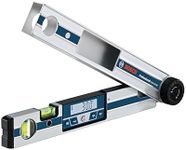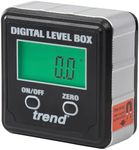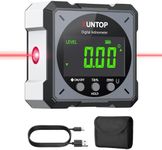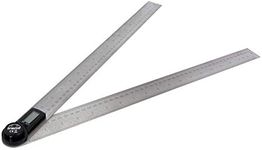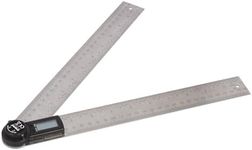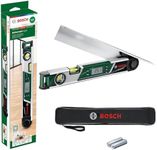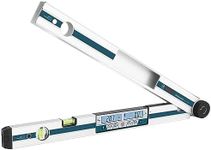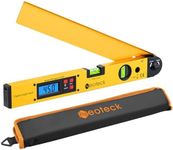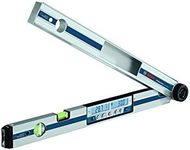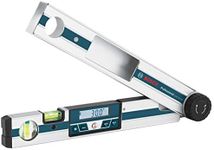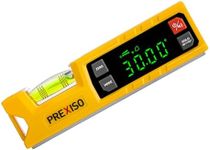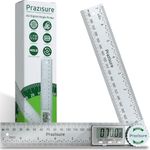Buying Guide for the Best Angle Finders
Angle finders, also known as angle gauges or protractors, are essential tools for anyone involved in construction, carpentry, or any task that requires precise angle measurements. Choosing the right angle finder involves understanding the specific needs of your projects and the features that will best support those needs. Consider the environment in which you'll be working, the level of precision required, and how often you'll be using the tool. This will help you determine which features are most important for your angle finder.Measurement RangeThe measurement range of an angle finder indicates the span of angles it can measure, typically from 0 to 180 degrees or 0 to 360 degrees. This spec is important because it determines the versatility of the tool in different applications. If you are working on projects that require measuring a full circle, a 360-degree range is necessary. For most standard applications, a 180-degree range is sufficient. Consider the types of projects you will be working on to decide the appropriate measurement range for your needs.
AccuracyAccuracy refers to how close the angle finder's measurements are to the true angle. This is crucial for tasks that require high precision, such as fine woodworking or metalworking. Accuracy is usually expressed in degrees, with smaller numbers indicating higher precision. For general construction work, an accuracy of within 0.5 degrees may be sufficient, but for more precise tasks, look for an angle finder with an accuracy of 0.1 degrees or better. Assess the level of precision your projects demand to choose the right accuracy level.
Display TypeAngle finders can have either digital or analog displays. Digital displays provide a clear, easy-to-read numerical value, which can be beneficial for quick and accurate readings. Analog displays, on the other hand, might be more durable and do not require batteries. If you prefer ease of use and quick readings, a digital display might be the best choice. However, if you are working in environments where durability is a concern, or if you want to avoid battery dependency, consider an analog display.
DurabilityDurability refers to the angle finder's ability to withstand wear and tear over time. This is particularly important if you will be using the tool in harsh environments or on a regular basis. Look for angle finders made from robust materials like stainless steel or high-quality plastic. Consider the conditions in which you will be using the tool and how often it will be used to determine the level of durability you need. A more durable tool will generally last longer and provide more reliable performance.
Size and PortabilityThe size and portability of an angle finder can affect how easily it can be transported and used in different locations. Smaller, more compact models are easier to carry and can be more convenient for on-the-go measurements. However, larger models might offer more features or a larger display, which can be beneficial for certain tasks. Consider how and where you will be using the angle finder to decide on the right size and portability for your needs. If you need to frequently move between job sites, a more portable model might be preferable.

